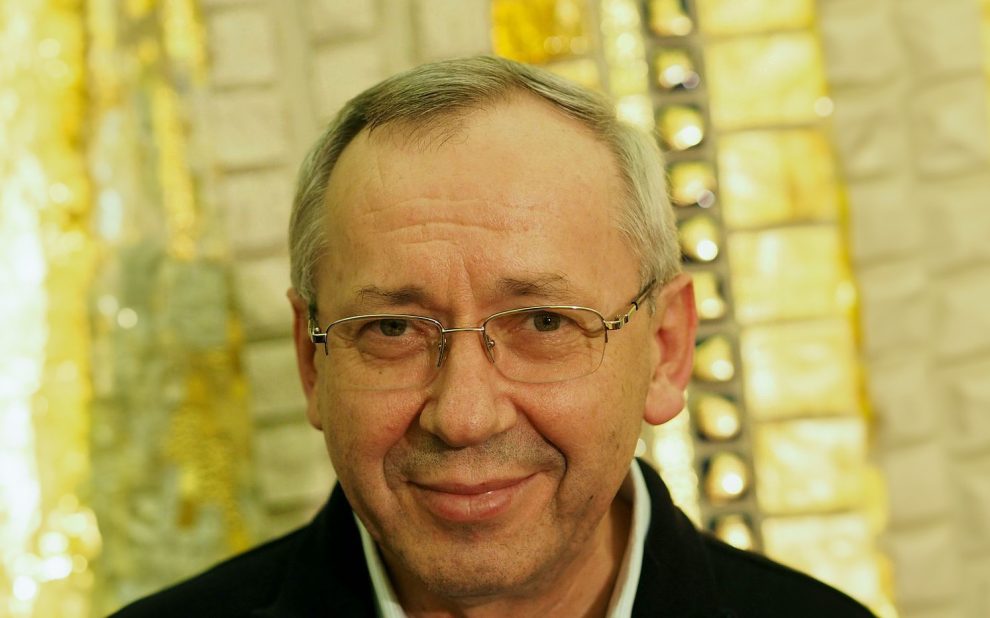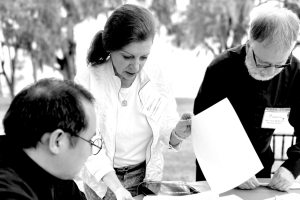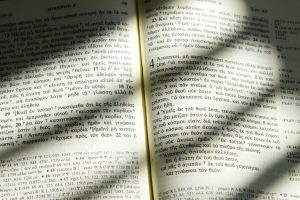On the last day of the annual Catholic Media Conference in Atlanta, Paolo Ruffini, prefect of the Dicastery for Communication of the Holy See, stood in front of a conference room full of journalists. As he concluded his keynote address about the importance of Catholic media as a tool to sow communion and hope, he opened the floor to questions.
Among the questions Ruffini fielded was a journalist’s, asking about the dicastery’s regular practice of posting artwork by Fr. Marko Rupnik, a Rome-based Jesuit and prolific mosaic artist who has been accused of sexually abusing 20 to 40 women religious. Vatican News, for example,has regularly used file photographs of Fr. Rupnik’s artwork to illustrate church feast days and seasons, despite protests from sexual abuse victims and their advocates.
In response to the challenge, Ruffini stated, “As Christian[s], we are asked not to judge.”
Those present, including another reporter, described the atmosphere as tense. The session ended awkwardly, with journalists rushing out to file the story. Ruffini’s remarks have circulated and dominated headlines in the Catholic world ever since.
Beyond those headlines, many of Ruffini’s specific Q&A responses continue to weigh on my mind. In one retort, he seemed to minimize Fr. Rupnik’s alleged abuse: “We are not talking about abuse of minors. We are talking [about] a story that we don’t know,” he said, seeming to imply one sort of abuse is more permissible than another. Ruffini also asserted that removing Fr. Rupnik’s art from public spaces “is not a Christian response.” Finally, when journalists posited that the removal of the art would communicate the church’s solidarity with victims, Ruffini bluntly replied, “I think you’re wrong.” The audience gasped.
However, the response from Ruffini that has left me the most unnerved is a seemingly simple question: “Who am I to judge?”
I turned this phrase over in my mind as I tried to recall why it felt significant. It finally clicked that Ruffini was echoing a question from Pope Francis, who had asked it during an in-flight press conference in July 2013 in response to a question about gay priests.
“If a person is gay and seeks God and has good will, who am I to judge?” Pope Francis replied.
In 2016, Pope Francis expounded on this comment in his book, The Name of God Is Mercy (Random House). The book, a transcription of Pope Francis’s interview with Italian journalist Andrea Tornielli, was meant to “reveal the heart of Francis and his vision.”
“On that occasion, I said this: If a person is gay and seeks out the Lord and is willing, who am I to judge that person?” Pope Francis told Tornielli. “I was paraphrasing by heart the Catechism of the Catholic Church, where it says that these people should be treated with delicacy and not be marginalized.”
The original soundbite played a notable role in defining the secular media’s earliest perception of the new pope. TIME magazine cited the answer as part of its explanation for declaring Pope Francis the magazine’s Person of the Year in 2013.
Who am I to judge? has become a lens through which many people, including myself, view Pope Francis’ papacy, and up until now, it has been a positive understanding. Beyond the context of the original quote, Pope Francis’ papacy has characteristically emphasized mercy and compassion, particularly toward our fellow humans but also toward the Earth and the environment.
Francis’ phrase rings of compassion; it reminds us of Jesus dining with the stigmatized—the tax collectors and the prostitutes. It has set a tone in the church at large, and it has inspired hope that our church could remain faithful to its doctrine while turning a new page toward compassion in how we treat the marginalized and the wounded. It has set the stage for a synodal church, in which our door is open, and it beckons to the broken with this message of welcome: “Enter in as you are, with all you are.”
However, Ruffini’s co-opting the phrase to apply to Fr. Rupnik turns it from one of compassion and openness to a dismissive, indifferent remark, one painful not only to victims of Fr. Rupnik’s alleged abuse but also to anyone who has been wounded by the church.
Of course, it is our practice in the United States to uphold the right of “innocent until proven guilty.” Perhaps we can extend the benefit of the doubt to Ruffini and assume his response was an attempt to uphold a just and even charitable outlook for Fr. Rupnik.
Nonetheless, the people who have investigated the allegations against Fr. Rupnik have not determined those allegations to be unfounded. Furthermore, the individuals who claim to be victims of his actions deserve to be heard, their needs met. The Society of Jesus completed its own investigation into the allegations, despite Fr. Rupnik’s refusal to cooperate; many of the victims’ statements recount horrific details, some of which involve grooming and abuse in the context of his mosaics’ creation. After the investigation, Fr. Rupnik was dismissed from the order, although he had not yet been laicized. The Dicastery for the Doctrine of the Faith has been investigating the cases since October 2023, when Pope Francis lifted the statute of limitations.
Who am I to judge? echoes the Christian call to extend mercy rather than judgment to our brothers and sisters. Judgment is God’s prerogative alone; God alone can see the whole of a person’s life, motivations, actions, and repentance, and so God alone can judge a person’s heart. Who am I to judge? when used within the context of personal humility, understanding our own brokenness, is truly a moment of surrender to Divine mercy and love.
Our task of mercy, though, is not unrelated to God’s justice; in fact, it is built upon recognition of God’s moral order. The need for mercy is recognized when a wrong has been committed and requires forgiveness—and the need for compassion arises when a person has been the victim of a moral wrong. Thus, the conviction behind Who am I to judge? is not a wholesale denial of justice. Rather, it recognizes the need to extend mercy to the offender, while leaving space for compassion and healing for the people wounded by the offense. When used correctly, Who am I to judge? reflects God’s unlimited mercy and opens the door for people who have fallen away from their faith, for whatever reason, to return and find rest in divine love.
Christ would certainly extend mercy to Fr. Rupnik, as he does to us all. But Ruffini’s remarks do a grave disservice to victims of abuse, who have repeatedly petitioned for Rupnik’s art to be removed and no longer used to illustrate sacred revelations and stories. For these victims, such art conveys the dissonance of the church and the deception of its artist, rather than the beauty and love it is meant to communicate.
During his keynote, Ruffini stated, “Catholicity lies precisely in this communion of diversity under the guidance of Peter and his successors. To communicate the beauty of the church means to witness this unity, which unites us to all those to whom we communicate.”
Fr. Rupnik’s art might still offer an entry to the beauty of the church to some viewers, but the art cannot be separated from the artist and his crimes, at least not for victims. If we are committed to these individuals’ full healing and the reassurance that they can rest safely in the arms of the Mother Church, we must take their accusations seriously. Fr. Rupnik’s actions do not reflect the love, mercy, and forgiveness communicated in the gospel stories portrayed in his artwork.
I hope Dr. Ruffini, as both a Catholic and a communications leader, uses his judgment to discern how to treat this issue with true mercy for all concerned. In order to communicate the beauty, unity, and “love that explains” that is so integral to the heart of the church, he must consider the weight of his words, their meaning, and their context—and then use his platform to lift up the hopeless, the meek, the wounded. Doing so would allow them to see that Mother Church is a safe haven where they can rest and heal their wounds without fear of being dismissed.
Image: Wikimedia Commons/Centroaletti (CC BY-SA 4.0). Note: the background of this image was expanded slightly using Adobe Photoshop AI tools.












Add comment